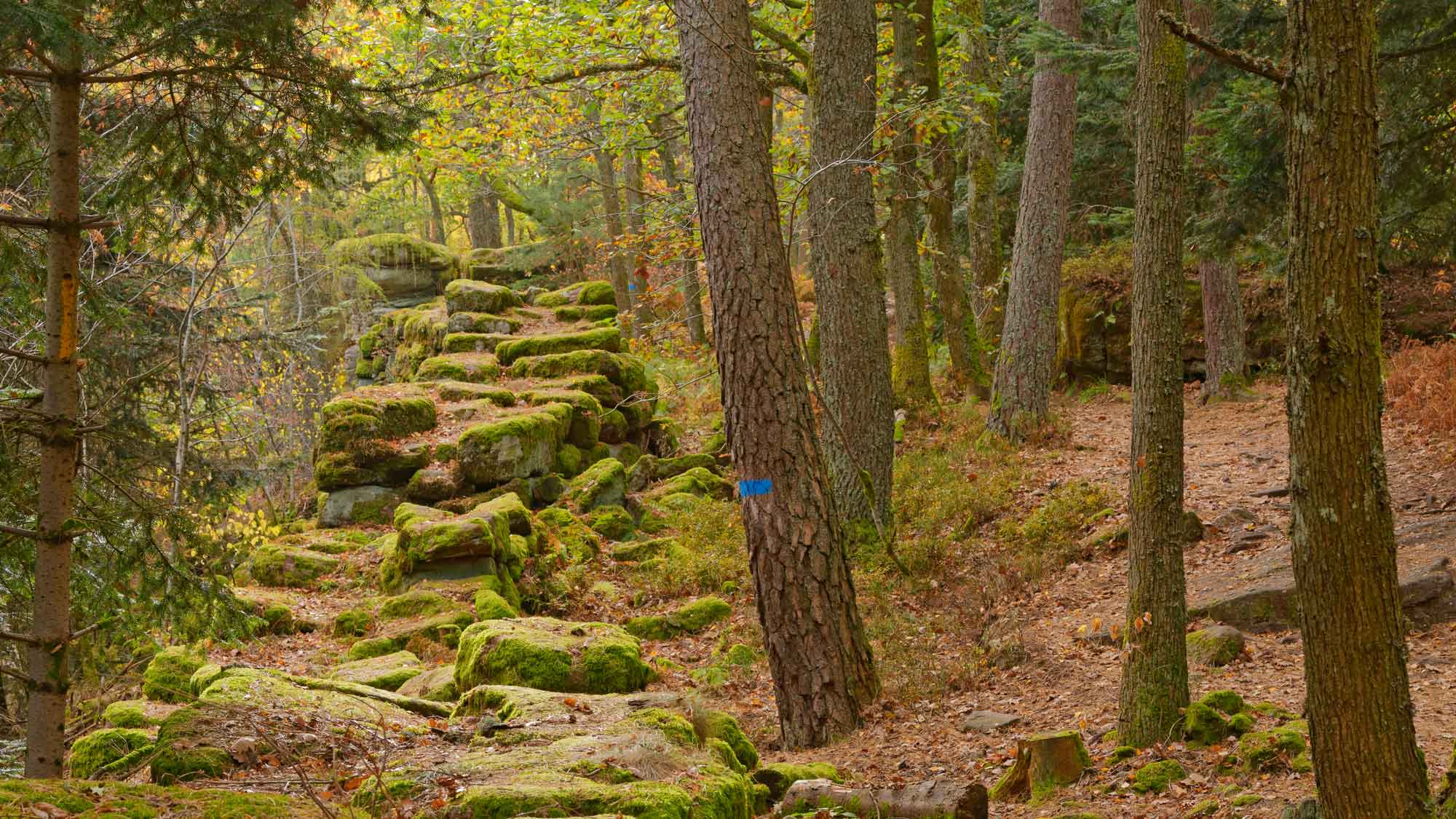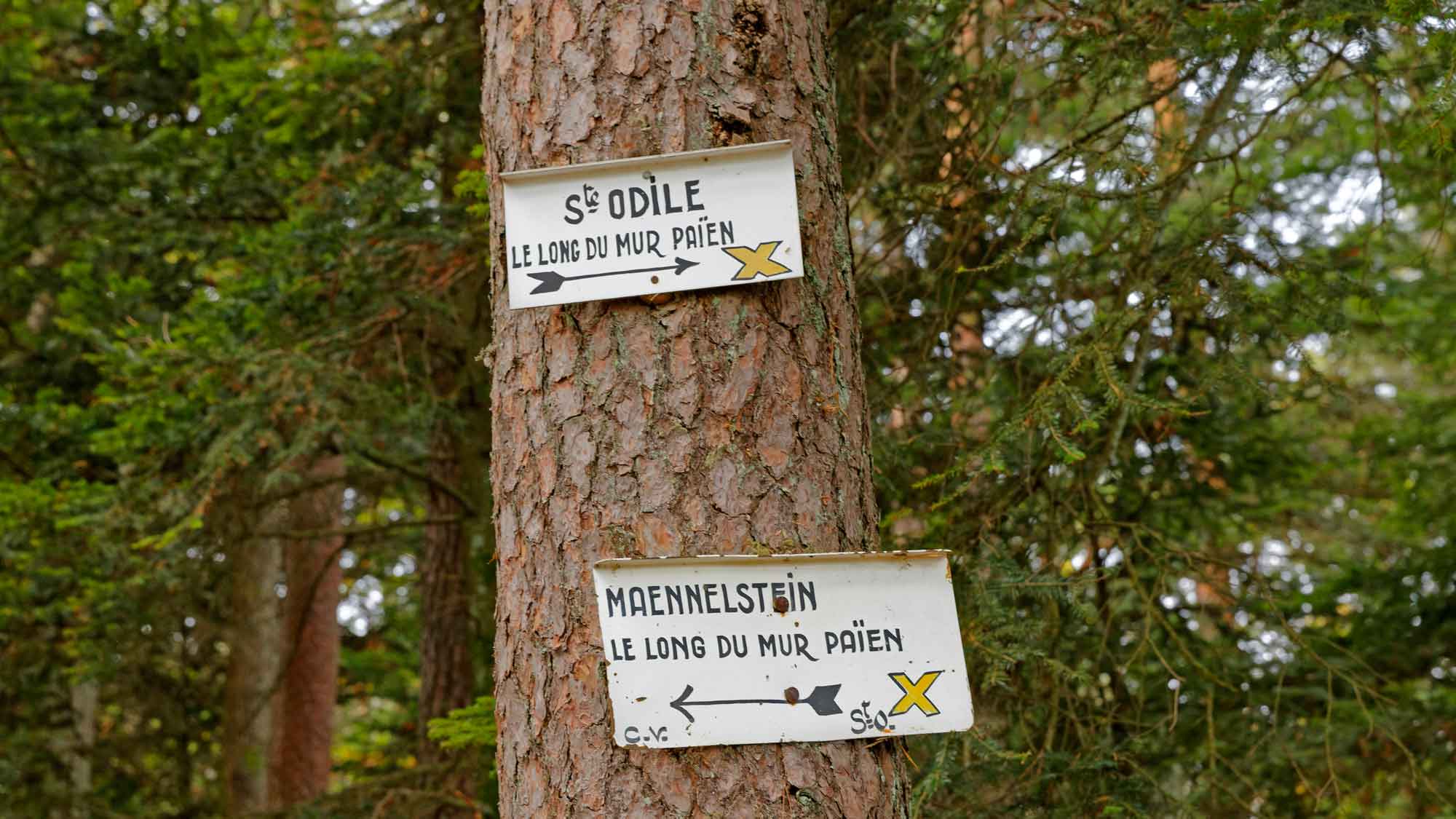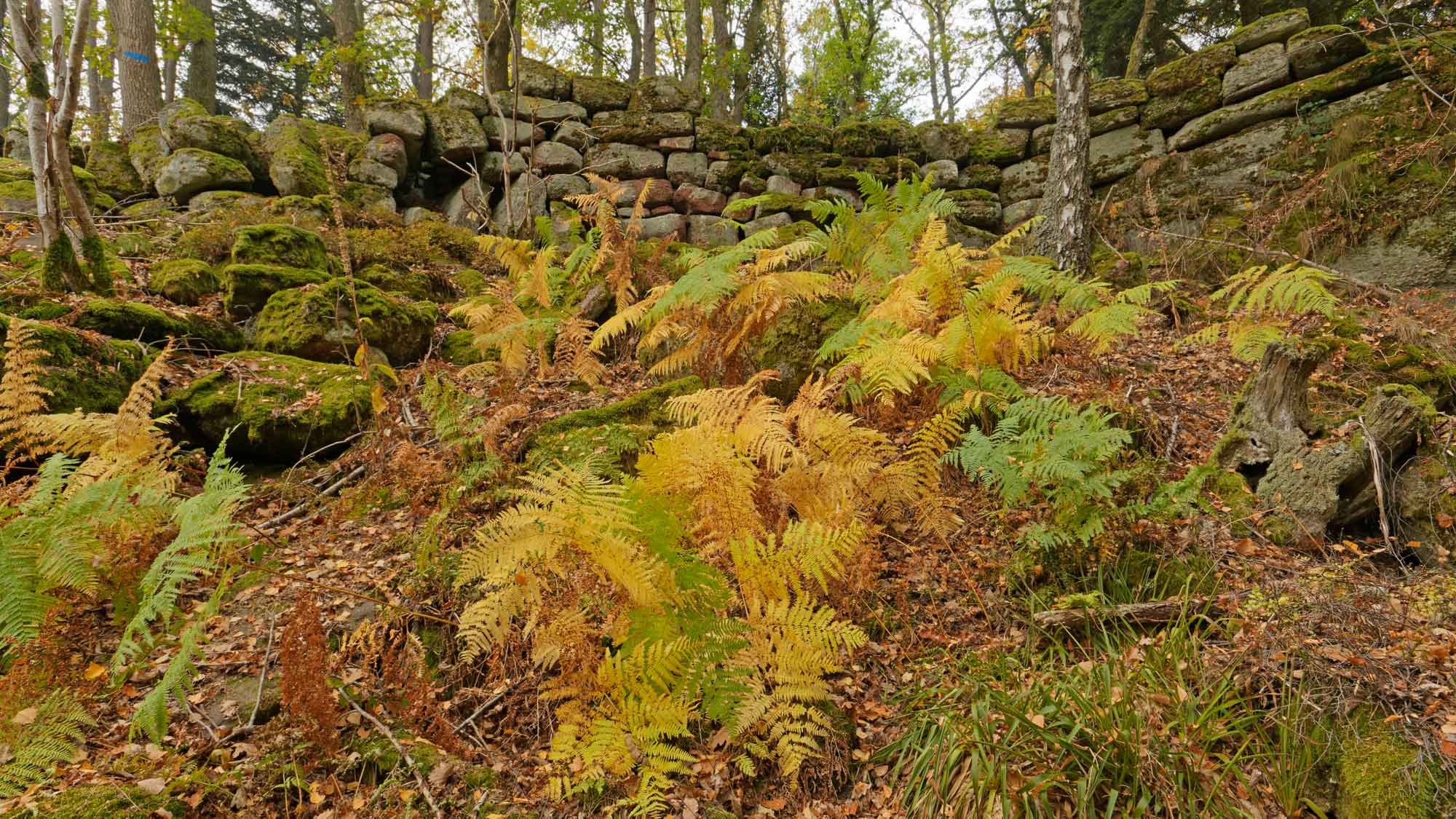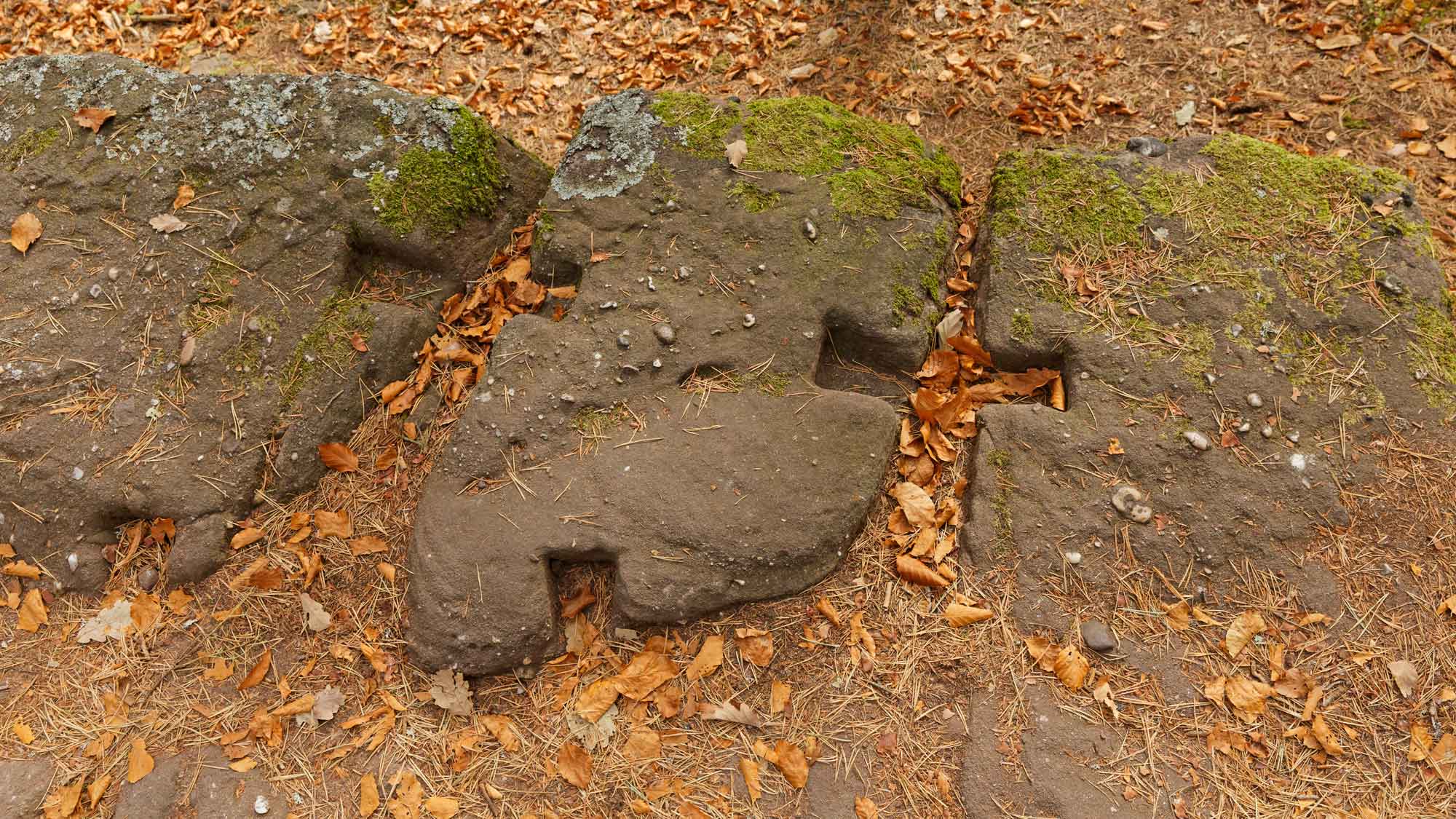The enigmatic pagan wall
The place must have magically attracted people long before Christianity. Anyone who explores the surrounding area from the monastery will always come across the remains of an imposing, enigmatic structure in the forest: the ‘Heidenmauer’. It covers an area of 120 hectares over a length of ten kilometers. On the ‹Wunderpfad› in the north of the monastery, red sandstone cliffs that look like menhirs tower over the path. You will find a particularly large number of pool stones further north, on the ‹Feenplatz› or ‹Hexenplatz› on Elsberg. On the wall tour on the south side of the monastery you pass the ‹Männelstein› at the southeast corner, where the statue of a Roman deity was found, and finally you come across the druid grotto reminiscent of a dolmen on the west side.
Pope Leo IX, Bruno von Eguisheim, was the first to report on the ‘Heidenmauer’ in the 11th century as patron of the Odile Monastery. The first research began at the end of the 16th century. To this day, opinions about the purpose and date of the wall are controversial – concrete evidence is lacking, and research is still ongoing. It is certain that defending the ten-kilometer-long wall would have required thousands of soldiers and that survival on the territory would have been unthinkable due to the sparse water sources. Traces of settlement or weapons have so far been found only sporadically. The mountain remains silent.




